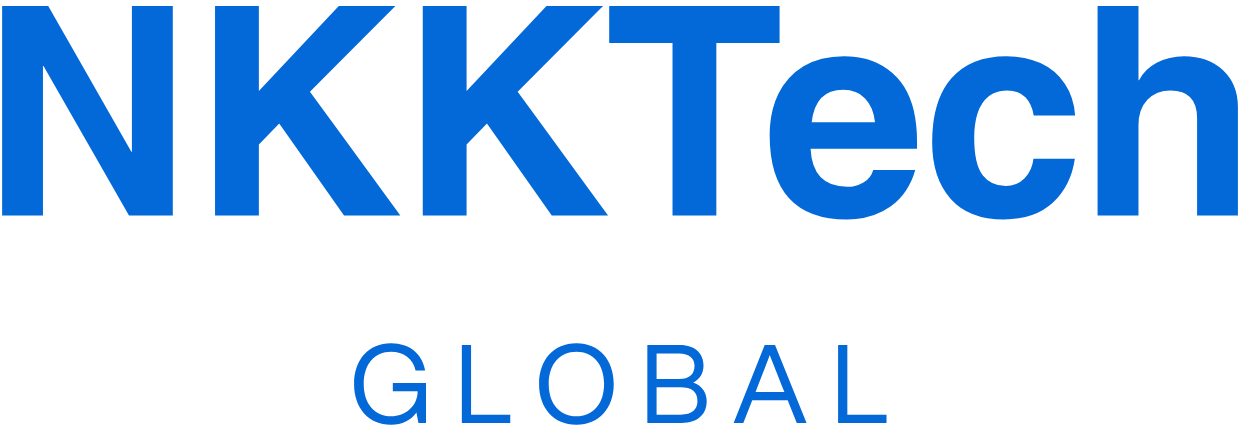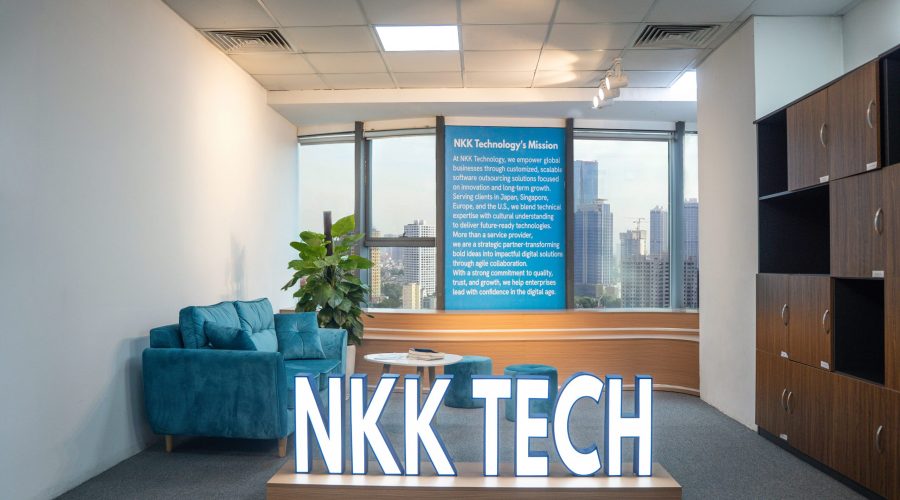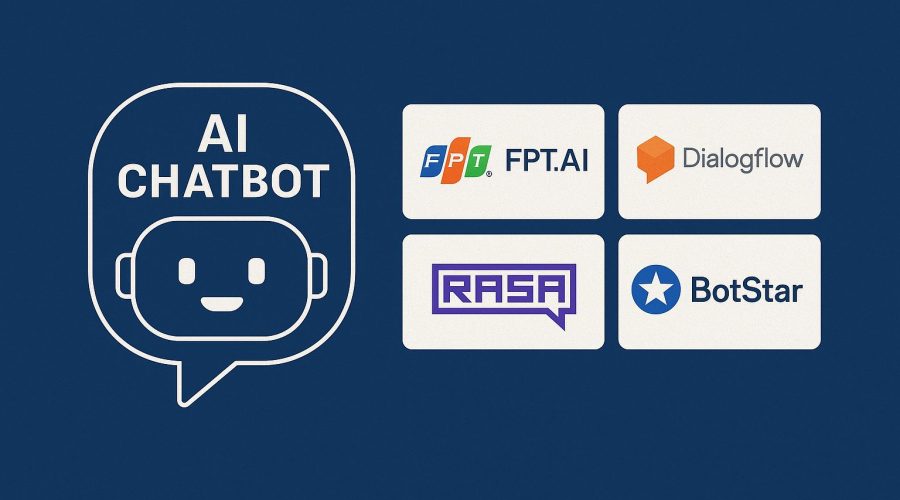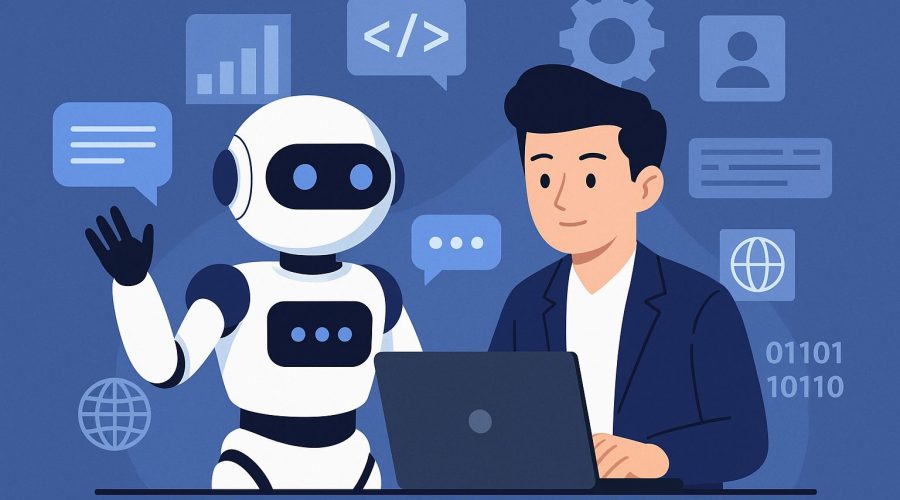Unlocking the Power of Conversational AI: A Deep Dive into Chatbot Technology
Have you ever interacted with a website or app and received instant, helpful responses without a human on the other end? Chances are, you’ve experienced the power of chatbot technology. These clever digital assistants are rapidly transforming how businesses engage with their customers, offering efficiency and convenience like never before. Understanding this innovative field is crucial for anyone looking to stay ahead in today’s digital landscape.
Table of Contents
- What Exactly is Chatbot Technology?
- How Chatbot Technology Works: The Intelligence Behind the Interactions
- Key Benefits of Implementing Chatbot Technology in Your Business
- Common Use Cases: Where Chatbot Technology Shines
- Challenges and the Exciting Future of Chatbot Technology
What Exactly is Chatbot Technology?
At its core, chatbot technology refers to software applications designed to simulate human conversation through text or voice interactions. Imagine a digital assistant always available to answer questions, guide users, or even complete tasks. These programs leverage artificial intelligence (AI) and natural language processing (NLP) to understand user inputs and generate relevant responses. They can be simple rule-based systems or highly advanced AI-powered assistants capable of learning and adapting over time.
Moreover, the primary goal of any chatbot is to provide immediate, automated support. This helps businesses streamline communication and improve the user experience. Instead of waiting for a human agent, customers can get instant answers to common queries, resolve issues quickly, or navigate through services seamlessly. This immediate gratification is a major reason for their growing popularity. Businesses are finding significant value in automating routine interactions, freeing up human staff for more complex tasks.
In essence, chatbot technology bridges the gap between human needs and automated efficiency. It allows for scalable customer interaction 24/7, without geographical limitations. This makes it an invaluable tool for businesses operating in a global marketplace. Many industries, from retail to healthcare, are now adopting these solutions. They offer a tangible improvement in operational effectiveness and customer satisfaction metrics.
How Chatbot Technology Works: The Intelligence Behind the Interactions
The magic behind chatbot technology lies in its ability to understand and respond to human language. This process involves several complex components, primarily natural language processing (NLP) and machine learning (ML). When you type a question into a chatbot, NLP helps the bot break down your sentence, identify keywords, and understand the intent behind your words. It’s like teaching a computer to comprehend human communication nuances.
Furthermore, there are generally two main types of chatbots: rule-based and AI-powered. Rule-based bots follow pre-defined scripts and can only answer questions programmed into them. They are excellent for FAQs or guiding users through structured processes. For example, a banking bot might guide you step-by-step through checking your account balance. On the other hand, AI-powered chatbots, also known as conversational AI, are far more sophisticated. These bots use machine learning algorithms to learn from past interactions. They can understand more complex queries, handle ambiguity, and even personalize conversations. This allows them to provide a more natural and human-like interaction experience.
Additionally, some advanced chatbots incorporate natural language understanding (NLU) to grasp context and sentiment, making their responses even more precise. They also use natural language generation (NLG) to create human-sounding replies. This continuous learning process, powered by vast amounts of data, allows AI chatbots to improve their performance over time. This makes them increasingly effective at resolving diverse user queries. The more they interact, the smarter they become, providing an ever-improving user experience. This blend of technologies ensures that the chatbot can not only understand what you say but also respond appropriately and effectively.
Key Benefits of Implementing Chatbot Technology in Your Business
Integrating chatbot technology offers a multitude of advantages for businesses of all sizes. One of the most significant benefits is the ability to provide 24/7 customer support. Customers no longer have to wait for business hours to get answers. This round-the-clock availability significantly enhances customer satisfaction and loyalty. Moreover, it reduces the workload on human support teams, allowing them to focus on more complex or sensitive issues that require a human touch.
Another crucial benefit is cost reduction. By automating routine inquiries and tasks, businesses can significantly cut down on labor costs associated with customer service. Chatbots can handle a high volume of concurrent conversations, something a human team cannot achieve without substantial scaling. This efficiency translates directly into operational savings. For instance, a single chatbot can manage hundreds of interactions simultaneously. This makes it a highly cost-effective solution for large-scale customer engagement. This financial advantage is particularly appealing to startups and small businesses looking to maximize their resources.
Furthermore, chatbots excel at providing consistent and accurate information. Unlike humans who might make errors or give slightly varied responses, a chatbot always provides the same pre-programmed or AI-driven correct answer. This consistency builds trust and ensures that every customer receives the same high-quality service. They also collect valuable data on customer queries and behavior. This data can then be analyzed to identify common pain points, improve products or services, and optimize marketing strategies. For example, insights from bot interactions can reveal frequently asked questions, informing future content creation or product development. This makes customer service automation a powerful tool for continuous improvement. Additionally, businesses can leverage chatbots to personalize customer interactions, offering tailored recommendations or promotions based on past behavior. This enhances the user experience and drives sales.
Common Use Cases: Where Chatbot Technology Shines
Chatbot technology is incredibly versatile, finding applications across a wide array of industries and business functions. Perhaps the most well-known use case is in customer support. Companies deploy chatbots on their websites, messaging apps, and social media platforms to handle frequently asked questions, provide order updates, troubleshoot common problems, and even process returns. This immediate support significantly improves response times and customer satisfaction. They act as the first line of defense, efficiently resolving issues before a human agent is needed.
In sales and marketing, chatbots play an increasingly vital role. They can qualify leads by asking a series of questions, provide product recommendations based on customer preferences, and even guide users through the purchasing process. For instance, an e-commerce chatbot might suggest complementary items or offer discount codes. This proactive engagement can significantly boost conversion rates. Many businesses are now using virtual assistants to pre-qualify leads before handing them over to sales teams. This ensures that sales representatives focus their efforts on genuinely interested prospects. They can also collect valuable feedback and conduct surveys, helping businesses understand their market better.
Moreover, chatbot technology is also being used for internal operations. HR departments use chatbots to answer employee questions about benefits, payroll, or company policies. IT support uses them to resolve technical issues or guide employees through software installations. This frees up internal teams from repetitive tasks, allowing them to focus on more strategic initiatives. For example, a chatbot can help new employees with onboarding questions, reducing the workload on HR staff. In the healthcare sector, chatbots assist patients with booking appointments, reminding them about medication, or providing general health information. The versatility of these AI tools continues to expand, making them indispensable across various domains. To learn more about digital transformation, consider visiting Nokasoft’s blog for further insights.
Challenges and the Exciting Future of Chatbot Technology
While chatbot technology offers immense potential, it’s not without its challenges. One of the primary hurdles is ensuring the bot can truly understand complex or nuanced human language. Misunderstandings can lead to frustrating user experiences. Furthermore, chatbots often struggle with empathy and handling highly emotional interactions, which still require a human touch. Data privacy and security are also critical concerns, especially when bots handle sensitive customer information. Designing a bot that feels natural and provides genuine value requires careful planning and continuous optimization.
Despite these challenges, the future of chatbot technology looks incredibly promising. We can expect significant advancements in conversational AI, leading to more sophisticated and human-like interactions. Bots will become better at understanding context, detecting emotions, and even initiating conversations proactively. The integration of chatbots with voice assistants, like Alexa and Google Assistant, will also become more seamless, making interactions even more convenient. We are already seeing trends towards hyper-personalization, where bots deliver highly tailored experiences based on individual user data and preferences.
Furthermore, the collaboration between humans and chatbots will evolve. Instead of replacing human agents entirely, bots will increasingly act as powerful tools that augment human capabilities. They will handle routine tasks, gather information, and pre-qualify leads, allowing human agents to focus on complex problem-solving and relationship building. This hybrid approach promises the best of both worlds: efficiency from automation and empathy from human interaction. The continuous development in machine learning and deep learning will unlock new possibilities for chatbot technology, making them even more integral to our daily lives and business operations. This exciting evolution promises a future where communication is more efficient and intuitive than ever before.
In conclusion, chatbot technology has already proven itself as a transformative force in customer engagement and operational efficiency. From automating support to enhancing sales and marketing, its applications are vast and growing. While challenges remain, the continuous evolution of AI promises even more intelligent, personalized, and seamless conversational experiences. Embracing this technology is not just an option but a strategic imperative for businesses aiming to thrive in the digital age. It represents a significant step towards a future where businesses connect with their customers more effectively and intelligently.




